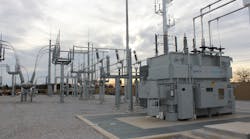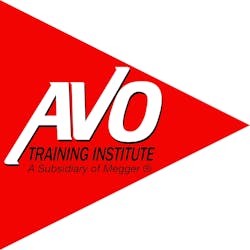Sponsored Content
Substation Maintenance: Six Strategies to Boost Productivity and Safety
June 3, 2019
Substations are often at the heart of a utility’s transmission and distribution system, but if they are not properly maintained, a company can experience a loss of power reliability and possible outages.
Greg Richmond, specialist for AVO Training Institute, offers six tips for technicians to stay on top of substation components, improve efficiency and focus on safety.
- Pay close attention to one-line diagrams. These diagrams, which display the configuration of the components within a substation, show normal and abnormal conditions and indicate which components must be isolated and grounded. To help technicians to properly troubleshoot the system, utilities must ensure that these diagrams are as detailed and accurate as possible. “If a substation technician comes in late Friday night, you need to make sure he is awarded every single opportunity to do the job safely,” Richmond says during a recent Webcast. For example, write any abnormal conditions in red, and make sure everyone is working from a diagram that is updated as often as possible.
- Focus on battery maintenance. Maintenance on batteries is important, because they provide backup power in the event of a blackout, Richmond says. To identify signs of deterioration or corrosion, technicians can perform a visual inspection, a performance test and a qualification test. During these tests, technicians must ensure that the batteries are properly ventilated and stored at the proper temperature. “The life of the battery reduces with the increase in temperature, so we need to make sure we keep our rooms at a steady 77 degrees,” Richmond says.
- Practice continuous testing of components within a substation. Ensure the equipment performs at peak value with no interruptions through a solid, comprehensive testing program. “As soon as every piece of equipment is built, it begins to deteriorate,” Richmond says. “Our job as techs is to test these pieces of equipment as often as possible.”
- Use manufacturer specifications. Test to the manufacturer specifications as far as voltage and make any necessary adjustments. “You need to put these specifications first and foremost,” Richmond says.
- Shine a spotlight on safety. Any time technicians perform work at a substation, they must have the proper clearance, ensure the proper authorities are notified and check for signage at the site to keep out any unauthorized personnel. Substation technicians should further protect themselves by wearing rated shoes, gloves, sleeves and arc flash gear—and leaving shiny things (like watches and rings) at home. At the end of the work day, they must not leave any of their personal items behind in the substation overnight.
- Watch out for co-worker complacency. Substation technicians should keep an eye on their fellow brothers and sisters in the trade at all times. “Make sure they are making the right moves,” Richmond says. “You want them to be able to go home at the end of the day with all 10 fingers and 10 toes and have the substation running like it is supposed to.”
Note: AVO Training Institute offers instructional videos on YouTube on substation maintenance as well as training courses on substation maintenance, transformer maintenance and battery maintenance and testing. Visit the Web site at www.avotraining.com to learn more.
Sponsored By:
Voice your opinion!
Voice your opinion!
To join the conversation, and become an exclusive member of EC&M, create an account today!
Continue Reading
Continue Reading
Sponsored Recommendations
Sponsored Recommendations
Latest from Maintenance, Repair & Operations
Latest from Maintenance, Repair & Operations
Sponsored
Sponsored




